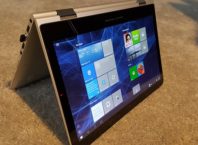Since its inception, Apple has been a stalwart in both portable and desktop computing. Known for their visual appeal and powerful operating systems, Macs are popularly seen in graphic design studios and coffee shops around the globe.
The Apple products are also well regarded for their built-in security features including an advanced anti-malware package. Mac owners are notorious for their pride in the product but should not be foolish enough to assume their device is invincible when it comes to safety and security.
It is commonly believed that Windows products are far more susceptible to hacking and data breaches. While there may be some merit to this line of thinking, Macs are hardly immune.
Apple products can be impacted by a variety of threats intended to harm your device. Some statistics show an increase in attempted attacks on Mac devices. Malware is not the only problem to consider and a well-rounded approach to security would serve every Mac user well.
A little common sense combined with some savvy and well-known products that are widely available can provide all the security your Mac will likely need. Here are five tips to gain confidence that your Mac is bulletproof.
Contents
1. Get to Know Your Security & Privacy Settings
Macs offer myriad built-in security and privacy tools that are adept at keeping your device safe. Unfortunately, too many users know nothing about them. Take a quick browse through the following paragraphs and make sure you are making good use of these settings.
The first line of defense against someone getting into your laptop or Mac desktop is disabling automatic login. Adding a password requirement makes your device much more difficult to physically access.
Consider selecting the option provided to only allow new app downloads from the Apple Store. A vast majority of malware comes from questionably sourced apps that mask themselves as legitimate while being a harmful invasion of your device.
Enable the FileVault feature on your Mac to automatically encrypt all your data stored on the device. This simple step could be the difference between security and major data theft if someone is able to access your Mac.
Finally, evaluate your privacy by reviewing what apps are sharing your information and how much detail they are giving away. Knowledge is power and many people have no clue that their privacy is being given up voluntarily.
2. Stay Up to Date
For some reason, Mac users treat operating system and app updates like they are the most inconvenient processes to have ever existed. Apple makes it easy with automatic update options including waiting until a predetermined time of day.
Updating the OS is vital to the security of your device. Many updates contain patches and fixes to bugs and known vulnerabilities. If you need an extra incentive for the performance of certain apps and programs is also typically improved after an update has been installed.
Another thing to consider while discussing updates is regularly backing up your device. Like updates, there are automatic options to ensure this task is performed even if you lose track of it.
Backing up your data can prevent major headaches if your device is ever hacked or attacked by malware intent on deleting things. It is highly recommended that you set a nightly backup to an external hard drive to ensure all your data is safe, regardless of what breach may occur.
3. Don’t Forget Your Browser
Safari is the standard browser for Mac, but many will opt to use a third-party browser instead. In either case, having a firm understanding of the settings on your browser of choice can help keep you safe.
Look into how your browser handles privacy and if it offers options to turn off website tracking, take advantage. Many will offer a “safe mode” intended to alert you in the event a dangerous or suspicious website is encountered.
Consider regularly deleting or clearing the cache of cookies held by your browser, as these can be used to track your movements as you peruse the internet.
4. Use a VPN for Mac
Once a term used by those “in the know” in the cybersecurity world, virtual private networks are now becoming widely popular. Installing a VPN on your Mac (click this link here now) can provide unmatched privacy that no other step will allow.
A VPN can serve multiple purposes, but one very important use is to encrypt data being sent to and from your Mac. If you use a public network like those found at coffee shops, bookstores, or airports, a VPN is an essential tool to prevent the intercept of your data.
5. Enable Find My Mac
This nifty tool from Apple is helpful in the event of a “grab and run” type of attack or if you leave your Mac on the train or bus.
Not only does it allow you to locate your device, but it can enable you to remotely lock it or wipe the data from it if you are concerned about data theft.
Conclusion
Apple has made its name on devices that are relatively free from the typical invasions seen by other products. However, falling asleep on your personal security could lead to the devastating outcome of data theft or a loss of privacy. Take the time to consider some simple steps to keep your Mac safe.












